Do you have a question about the Toyota 4RUNNER 1998 and is the answer not in the manual?
Details operation of the ignition switch, transmission, and parking brake systems.
Explains the different positions of the ignition switch and its interaction with the steering lock.
Covers the operation of the automatic transmission, including gear selection and overdrive.
Explains the front drive control lever and transfer modes for four-wheel drive operation.
Describes the function and operation of the rear differential lock system for enhanced traction.
Details how to set and release the parking brake to secure the vehicle.
Explains how to operate the cruise control system for maintaining a set speed.
Describes the function of the clutch start cancel switch for starting the engine with the clutch engaged.
Provides a general overview of the vehicle's instrument panel, cluster, and indicator symbols.
Illustrates and labels the main components of the instrument panel.
Shows and labels the gauges and indicators within the instrument cluster.
Explains the meaning of various warning lights and indicator symbols on the instrument panel.
Covers the operation of headlights, turn signals, wipers, washers, and defogger systems.
Explains how to operate headlights, including parking lights and high/low beams.
Details how to use the turn signals for indicating turns and lane changes.
Describes how to activate the emergency flashers to warn other drivers.
Explains how to adjust the brightness of the instrument panel lights.
Details the operation of the windshield wipers and washers, including intermittent settings.
Covers the operation of the back window wiper and washer system.
Explains how to use the back window defogger to clear condensation.
Covers various other equipment and accessories in the vehicle.
Explains how to set and adjust the digital clock.
Details the operation and care of the cigarette lighter and ashtray.
Describes the function and usage of the vehicle's power outlet for accessories.
Explains how to open, close, and lock the glovebox.
Details the operation and proper use of the vehicle's cup holders.
Describes how to use and operate the luggage cover.
Covers seat adjustment, seat belts, steering wheel, and mirrors.
Discusses seat adjustment precautions and methods for front seats.
Provides instructions on adjusting front seats for optimal comfort and safety.
Explains how to fold down the rear seats to increase luggage space.
Details the adjustment and importance of head restraints for safety.
Covers seat belt precautions, usage, and adjustment for all occupants.
Explains the function, operation, and safety precautions related to SRS airbags.
Provides guidance on using and installing child restraint systems safely.
Explains how to adjust the steering wheel angle for driver comfort and control.
Details how to adjust and use the outside rear view mirrors for visibility.
Covers the operation of the inside rear view mirror for reducing glare.
Explains the use of sun visors and vanity mirrors.
Offers precautions for driving the vehicle in off-road conditions and rugged terrain.
Outlines recommended procedures for the initial break-in period to ensure longevity.
Details fuel types, octane ratings, and additives recommended for the vehicle.
Explains the function and precautions related to the three-way catalytic converter.
Highlights critical safety precautions regarding engine exhaust and its potential hazards.
Covers the tandem master cylinder brake system and brake booster operation.
Explains the function of brake pad wear limit indicators and when to replace pads.
Provides important safety guidelines for loading and securing luggage in the vehicle.
Explains where to find the vehicle identification number (VIN) for identification purposes.
Details different types of tires (summer, all-season) and their suitability for various conditions.
Outlines pre-driving checks and adjustments for safe operation.
Provides step-by-step instructions for preparing to start the engine.
Explains the normal starting procedure for both cold and hot engines.
Offers advice for driving safely in different conditions like gusty winds and wet roads.
Provides crucial precautions for operating the vehicle in off-road environments.
Offers advice for preparing and driving the vehicle in cold weather conditions.
Covers essential information and precautions for towing a trailer with the vehicle.
Provides tips on fuel efficiency and vehicle maintenance for longevity.
Provides troubleshooting steps for when the vehicle fails to start.
Covers basic checks for common starting issues like battery and fuel.
Provides detailed instructions and safety precautions for jump-starting a dead battery.
Outlines what to do if the engine stalls unexpectedly while driving.
Details the steps to take if the engine overheats, including safety precautions.
Provides a step-by-step guide for changing a flat tire, including safety measures.
Lists the necessary tools and the spare tire for changing a flat tire.
Details the procedure for loosening wheel nuts before raising the vehicle.
Guides on how to properly position and use the jack to raise the vehicle.
Covers the process of removing the flat tire and installing the spare.
Covers post-tire change checks, including air pressure and tool storage.
Provides instructions and methods for towing the vehicle in different scenarios.
Illustrates methods for towing with a wheel lift truck, from front and rear.
Shows how to tow the vehicle using a flatbed truck.
Covers emergency towing procedures using a cable or chain secured to the towing hook.
Explains how to use the shift lock override button to shift out of Park.
Advises on what to do if keys are lost or locked inside the vehicle.
Explains common causes of corrosion and general guidelines for prevention.
Details procedures for regular washing and waxing to maintain the vehicle's finish.
Covers methods for cleaning the vehicle's interior, including upholstery and carpets.
Explains the importance of scheduled maintenance for vehicle longevity and performance.
Lists day-to-day checks and practices essential for proper vehicle operation.
Helps identify potential issues by listing signs that may indicate a need for repair.
Covers maintenance procedures for the engine and chassis components.
Details how to check and add engine oil, including oil type and quantity recommendations.
Explains how to check the engine coolant level and the proper type of coolant to use.
Guides on how to check the brake fluid level and the type of fluid to use.
Details how to check the power steering fluid level and the correct fluid type.
Provides instructions and precautions for checking tire pressure to ensure safety and tire longevity.
Covers how to check tire tread wear and the process for replacing tires.
Explains the importance and procedure for rotating tires to equalize wear.
Offers guidance on selecting and installing snow tires and chains for winter driving.
Details the process and considerations for replacing vehicle wheels.
Provides specific precautions for maintaining and handling aluminum wheels.
Covers maintenance and replacement of electrical components.
Explains how to check the battery's condition and important safety precautions.
Outlines crucial safety measures and procedures for recharging a vehicle battery.
Guides on how to check and replace blown fuses to restore electrical component function.
Explains how to add washer fluid to the reservoir, including fluid types.
Provides instructions and specifications for replacing various vehicle light bulbs.
Provides key dimensions and weight specifications for the vehicle.
Details engine specifications, including type, bore, stroke, displacement, and spark plugs.
Covers fuel type, tank capacity, and octane rating recommendations.
Lists various service specifications like valve clearance and fluid capacities.
Provides tire specifications, including pressure, size, and wheel nut torque.
Lists fuse types, ratings, and the circuits they protect in both U.S.A. and Canadian models.
Explains how U.S. owners can report potential safety defects to NHTSA and Toyota.
Details the DOT tire quality grades (Treadwear, Traction, Temperature) for passenger vehicles.
Details operation of the ignition switch, transmission, and parking brake systems.
Explains the different positions of the ignition switch and its interaction with the steering lock.
Covers the operation of the automatic transmission, including gear selection and overdrive.
Explains the front drive control lever and transfer modes for four-wheel drive operation.
Describes the function and operation of the rear differential lock system for enhanced traction.
Details how to set and release the parking brake to secure the vehicle.
Explains how to operate the cruise control system for maintaining a set speed.
Describes the function of the clutch start cancel switch for starting the engine with the clutch engaged.
Provides a general overview of the vehicle's instrument panel, cluster, and indicator symbols.
Illustrates and labels the main components of the instrument panel.
Shows and labels the gauges and indicators within the instrument cluster.
Explains the meaning of various warning lights and indicator symbols on the instrument panel.
Covers the operation of headlights, turn signals, wipers, washers, and defogger systems.
Explains how to operate headlights, including parking lights and high/low beams.
Details how to use the turn signals for indicating turns and lane changes.
Describes how to activate the emergency flashers to warn other drivers.
Explains how to adjust the brightness of the instrument panel lights.
Details the operation of the windshield wipers and washers, including intermittent settings.
Covers the operation of the back window wiper and washer system.
Explains how to use the back window defogger to clear condensation.
Covers various other equipment and accessories in the vehicle.
Explains how to set and adjust the digital clock.
Details the operation and care of the cigarette lighter and ashtray.
Describes the function and usage of the vehicle's power outlet for accessories.
Explains how to open, close, and lock the glovebox.
Details the operation and proper use of the vehicle's cup holders.
Describes how to use and operate the luggage cover.
Covers seat adjustment, seat belts, steering wheel, and mirrors.
Discusses seat adjustment precautions and methods for front seats.
Provides instructions on adjusting front seats for optimal comfort and safety.
Explains how to fold down the rear seats to increase luggage space.
Details the adjustment and importance of head restraints for safety.
Covers seat belt precautions, usage, and adjustment for all occupants.
Explains the function, operation, and safety precautions related to SRS airbags.
Provides guidance on using and installing child restraint systems safely.
Explains how to adjust the steering wheel angle for driver comfort and control.
Details how to adjust and use the outside rear view mirrors for visibility.
Covers the operation of the inside rear view mirror for reducing glare.
Explains the use of sun visors and vanity mirrors.
Offers precautions for driving the vehicle in off-road conditions and rugged terrain.
Outlines recommended procedures for the initial break-in period to ensure longevity.
Details fuel types, octane ratings, and additives recommended for the vehicle.
Explains the function and precautions related to the three-way catalytic converter.
Highlights critical safety precautions regarding engine exhaust and its potential hazards.
Covers the tandem master cylinder brake system and brake booster operation.
Explains the function of brake pad wear limit indicators and when to replace pads.
Provides important safety guidelines for loading and securing luggage in the vehicle.
Explains where to find the vehicle identification number (VIN) for identification purposes.
Details different types of tires (summer, all-season) and their suitability for various conditions.
Outlines pre-driving checks and adjustments for safe operation.
Provides step-by-step instructions for preparing to start the engine.
Explains the normal starting procedure for both cold and hot engines.
Offers advice for driving safely in different conditions like gusty winds and wet roads.
Provides crucial precautions for operating the vehicle in off-road environments.
Offers advice for preparing and driving the vehicle in cold weather conditions.
Covers essential information and precautions for towing a trailer with the vehicle.
Provides tips on fuel efficiency and vehicle maintenance for longevity.
Provides troubleshooting steps for when the vehicle fails to start.
Covers basic checks for common starting issues like battery and fuel.
Provides detailed instructions and safety precautions for jump-starting a dead battery.
Outlines what to do if the engine stalls unexpectedly while driving.
Details the steps to take if the engine overheats, including safety precautions.
Provides a step-by-step guide for changing a flat tire, including safety measures.
Lists the necessary tools and the spare tire for changing a flat tire.
Details the procedure for loosening wheel nuts before raising the vehicle.
Guides on how to properly position and use the jack to raise the vehicle.
Covers the process of removing the flat tire and installing the spare.
Covers post-tire change checks, including air pressure and tool storage.
Provides instructions and methods for towing the vehicle in different scenarios.
Illustrates methods for towing with a wheel lift truck, from front and rear.
Shows how to tow the vehicle using a flatbed truck.
Covers emergency towing procedures using a cable or chain secured to the towing hook.
Explains how to use the shift lock override button to shift out of Park.
Advises on what to do if keys are lost or locked inside the vehicle.
Explains common causes of corrosion and general guidelines for prevention.
Details procedures for regular washing and waxing to maintain the vehicle's finish.
Covers methods for cleaning the vehicle's interior, including upholstery and carpets.
Explains the importance of scheduled maintenance for vehicle longevity and performance.
Lists day-to-day checks and practices essential for proper vehicle operation.
Helps identify potential issues by listing signs that may indicate a need for repair.
Covers maintenance procedures for the engine and chassis components.
Details how to check and add engine oil, including oil type and quantity recommendations.
Explains how to check the engine coolant level and the proper type of coolant to use.
Guides on how to check the brake fluid level and the type of fluid to use.
Details how to check the power steering fluid level and the correct fluid type.
Provides instructions and precautions for checking tire pressure to ensure safety and tire longevity.
Covers how to check tire tread wear and the process for replacing tires.
Explains the importance and procedure for rotating tires to equalize wear.
Offers guidance on selecting and installing snow tires and chains for winter driving.
Details the process and considerations for replacing vehicle wheels.
Provides specific precautions for maintaining and handling aluminum wheels.
Covers maintenance and replacement of electrical components.
Explains how to check the battery's condition and important safety precautions.
Outlines crucial safety measures and procedures for recharging a vehicle battery.
Guides on how to check and replace blown fuses to restore electrical component function.
Explains how to add washer fluid to the reservoir, including fluid types.
Provides instructions and specifications for replacing various vehicle light bulbs.
Provides key dimensions and weight specifications for the vehicle.
Details engine specifications, including type, bore, stroke, displacement, and spark plugs.
Covers fuel type, tank capacity, and octane rating recommendations.
Lists various service specifications like valve clearance and fluid capacities.
Provides tire specifications, including pressure, size, and wheel nut torque.
Lists fuse types, ratings, and the circuits they protect in both U.S.A. and Canadian models.
Explains how U.S. owners can report potential safety defects to NHTSA and Toyota.
Details the DOT tire quality grades (Treadwear, Traction, Temperature) for passenger vehicles.
| Brand | Toyota |
|---|---|
| Model | 4RUNNER 1998 |
| Category | Automobile |
| Language | English |
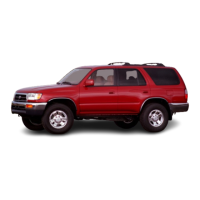

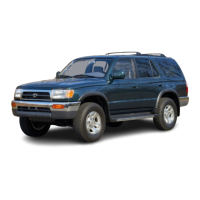
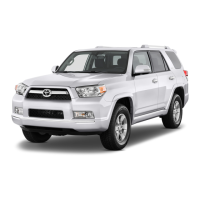

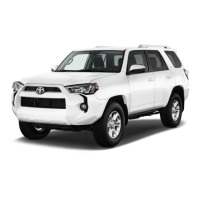


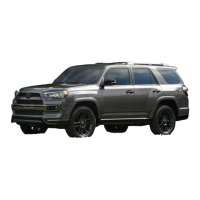

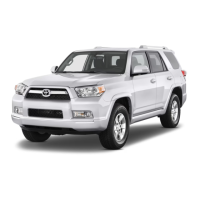

